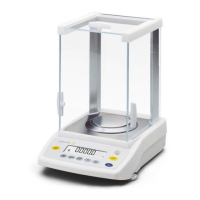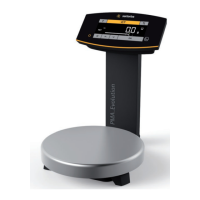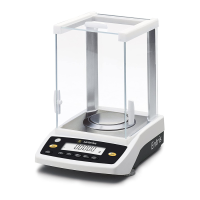Calibration and Adjustment
Purpose
Calibration is the determination of any
difference between the measured value
displayed and the true weight (mass) of
a sample. Adjustment is the correction
of this difference, or its reduction to an
allowable level within maximum permis-
sible error limits.
Using Verified Balances/Scales as Legal
Measuring Instruments in the EU*:
Before using your balance/scale as a
legal measuring instrument, internal
calibration must be performed at the
place of installation.
Features
Calibration/adjustment can be
performed only when:
– there is no load on the balance/scale,
– the balance/scale is tared, and
– the internal signal is stable.
If these conditions are not met, an error
message is displayed (“Err 02”).
The weight displayed for the sample on
the balance/scale must not differ from
the nominal weight by more than 2%.
You can use any of the following
weight units in calibration/adjustment:
Cal.Unit: Grams, Kilogr. or Pounds
External Calibration in Verified
Balances/Scales of Accuracy Class K
– When the balance/scale is used in legal
metrology, external calibration is
blocked by a seal over the menu access
switch.
* Including the Signatories of the Agree-
ment on the European Economic Area
To block calibration/adjustment:
– Select Cal.-Adj.: blocked in the menu
and
– Close the menu access switch on the
back of the balance/scale
For details on generating an ISO/GLP-
compliant printout of calibration/
adjustment results, see page 41.
Following calibration/adjustment,
the application program is cleared.
Internal Calibration/Adjustment
In the operating menu, select Cal.-
Adj.: Cal.Int. before beginning.
The built-in motorized calibration
weight is applied and removed auto-
matically for internal calibration.
§ Select calibration/adjustment:
Press Q
> The built-in weight is applied automati-
cally
> The balance/scale is adjusted
> The built-in calibration weight is
removed.
14

